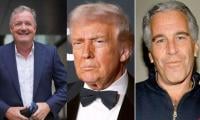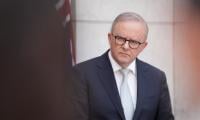Karachi
With an all-out war, of sorts, declared against polio by the state, devising effective media strategies to counter misconceptions as well as creating awareness regarding the virus was acknowledged to be a key aspect of the polio prevention campaign – aiming at a possible eradication of the virus by the end of this year.
For the purpose, a roundtable discussion, organised by the United Nations International Children’s Emergency Fund (Unicef) and the Sindh Emergency Operations Centre, was held with media managers (editors, producers), health experts and officials working on the polio eradication campaign, on Thursday.
Initiated in the aftermath of the World Health Organisation’s (WHO) recommendation of imposing a travel ban on Pakistan in 2014, for being among the few countries exporting the wild polio virus, government officials, health experts and most importantly health workers have since been engaged in what seems to be a long drawn battle against the crippling disease.
As was obvious from the considerable drop in the number of cases otherwise being reported annually, the campaign has had its share of obstacles in engaging communities either in the shape of inaccessibility to conflict-ridden areas, targeted attacks on vaccinators or a lack of media attention to the issue.
While all media managers in attendance were unanimous over the issue being crucial, several stressed on it not being ‘sensational’ enough for channels to cover. “The media won’t include it in the news bulletin unless somebody dies,” remarked prominent TV show host and analyst Zarrar Khuhro.
Speaking of show-ratings deciding who and what gets coverage, another journalist Talha Siddiqui opined that where we could all collectively abhor today’s media for what it has become, there still were ways to go about it such as the entertainment media.
The medium was agreed to be the most effective so far in forming narratives. A few successful examples of it being used by organisations working on social issues were also cited.
Engaging communities through theatres, forming catchy slogans, making use of creative visuals as well taking celebrities and social figures on board through paid media content were a few of the other recommendations given to the concerned officials.
Moderating the discussion, renowned columnist associated with this newspaper and the BBC, Rahimullah Yusufzai, called for all media personnel to not run stories regarding a polio virus case until they had had the news confirmed directly by health officials associated with the immunisation programme.
He also advised reporters and other news handlers to retract the news as flashily as it was reported in case it turned out to be false, which he claimed had happened on a few instances.
Referring to a common misconception regarding an oral polio vaccine (OPV) being harmful in case it was administered after expiration, Unicef official Abid Hasan stated that the media most importantly had do away with the notion. “It only becomes ineffective! Not poisonous!” he categorically stated.
Besides, health officials and journalists also engaged over a short yet expansive discussion over other factors influencing the eradication campaign. The factors included the government’s infrastructural shortcomings or in some other cases short-sightedness of experts and faulty planning of teams entrusted with administering the vaccine.
The media personnel were also provided with the basic know-how of the disease as well as story ideas which could be taken up by them.















